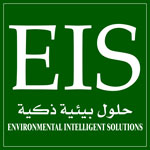One of the major concerns of the treated water quality of conventional urban wastewater treatment plants are related to the detection of refractory chemical pollutants such as pharmaceuticals, endocrine disruptor, personal care products, pesticides, heavy metals and other chemical substances which are contributing the high COD to the TSE. Most of these contaminants, both synthetic organic chemicals and naturally occurring substances, enter the sewage in several different ways. The risk associated to these contaminants, is related to their ubiquity and persistence into the environment as well as to their biological activity that may affect the development of aquatic organisms and severe irreversible damages to the aquifers..
The majority of the wastewater treatment plants (WWTP) utilize some form of settling and biological treatment, often with disinfection as the final step. Activated sludge is one common type of biological treatment, and was first developed more than one hundred years ago, with the main intention of reducing organics through biodegradation and metabolic processes carried out by dense and highly active microbial populations. Public health has improved drastically over the last century, with a marked decrease in waterborne disease outbreak, as WWTPs became a widely implemented foundation of urban infrastructure. But antibiotic-resistant bacteria (ARB) and antibiotic resistance genes (ARGs) are increasingly coming under the spotlight, as emerging contaminants, existing wastewater treatment and reuse methods do not adequately address these concerns.


Although conventional biological processes are usually efficient for the degradation of pollutants occurring in wastewater, ARB, ARG and refractory compounds are not effectively removed.EIS is continuously increasing its efforts for development of alternative water reuse technologies, mainly focused on urban and industrial wastewater. In this context, EIS have developed a highly competitive water treatment technology by integrating the Advanced Oxidation Processes (AOPs) with the conventional activated sludge process, for the removal of those organic pollutants not treatable by conventional techniques only, due to their high chemical stability and/or low biodegradability. To protecting drinking water sources, In EIS wastewater treatment plants, special care are given to prevent dissemination of ARB and ARGs and to ensure that appropriate barriers are emplaced. The existing wastewater treatment plants could also benefit from modification or retrofit with our treatment scheme for achieving high quality product water and resource recovery.
In order to ensure the economic optimization of the combined process, special attention has been paid by EIS, when AOPs are used as post treatment of the treated wastewater after the biological processing and their performances have been adequately assessed and optimized the intensity and duration of the treatment.
Commonly referred to as AOPs, Advanced oxidation processes are used to oxidize complex organic contaminants, ARB and ARG that are carry over in to the treated wastewater after the activated sludge process, and that are difficult to degrade into simpler end products through biological processes. AOPs are based on the chemistry of hydroxyl radicals (• OH), which are non-selective reactive species, able to oxidize pollutants into mineral end-products, yielding CO2 and inorganic ions.
.gif)


